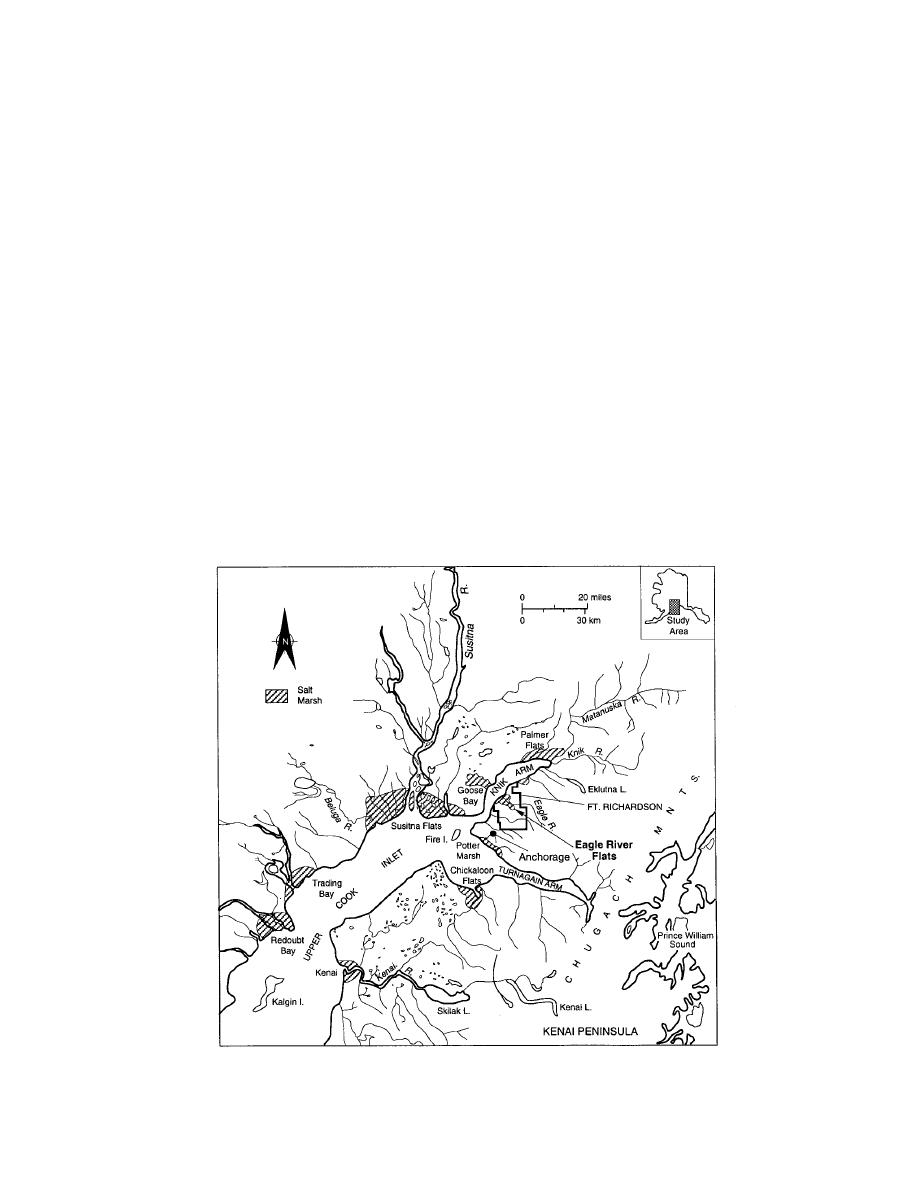
Initial Analyses of Eagle River Flats Hydrology and Sedimentology,
Fort Richardson, Alaska
DANIEL E. LAWSON, SUSAN R. BIGL, JOHN H. BODETTE AND PATRICIA WEYRICK
shells detonated during training on this artillery
INTRODUCTION
range, which has been active since the early 1940s
Eagle River Flats (ERF) is a 1000-ha tidal flat
(Racine et al. 1992a, 1993). White phosphorus
and salt marsh at the mouth of Eagle River on
(WP) particles are now present in near-surface
sediments at numerous locations within ERF, in-
Knik Arm, near Anchorage, Alaska (Fig. 1). Previ-
cluding the pond and marsh bottoms where dab-
ous work by CRREL has shown that an unusually
bling ducks ingest them during feeding.
high mortality of migratory waterfowl within
Various remedial measures are being consid-
ERF, particularly ducks, is attributable to inges-
tion of elemental white phosphorus (P4) particles
ered to control duck mortality from WP ingestion
(Racine et al. 1992a,b). The primary source of
(Racine et al. 1993). Proposed remedies, which in-
white phosphorus particles is smoke-producing
clude dredging, draining ponds, placing geotex-
Figure 1. Upper Cook Inlet region showing ERF and several other estuarine salt
marshes (shaded areas).



 Previous Page
Previous Page
